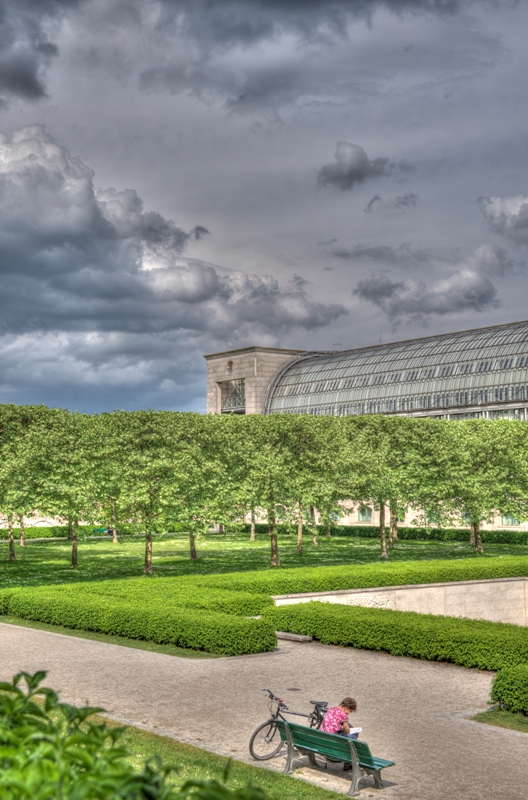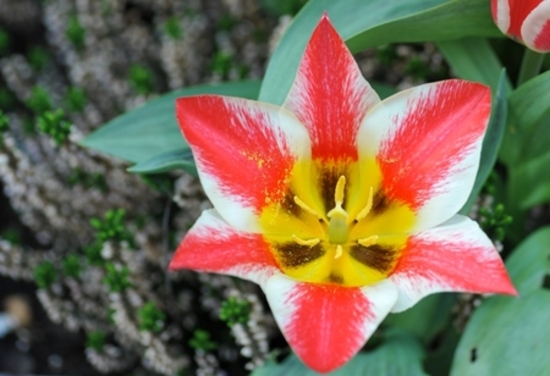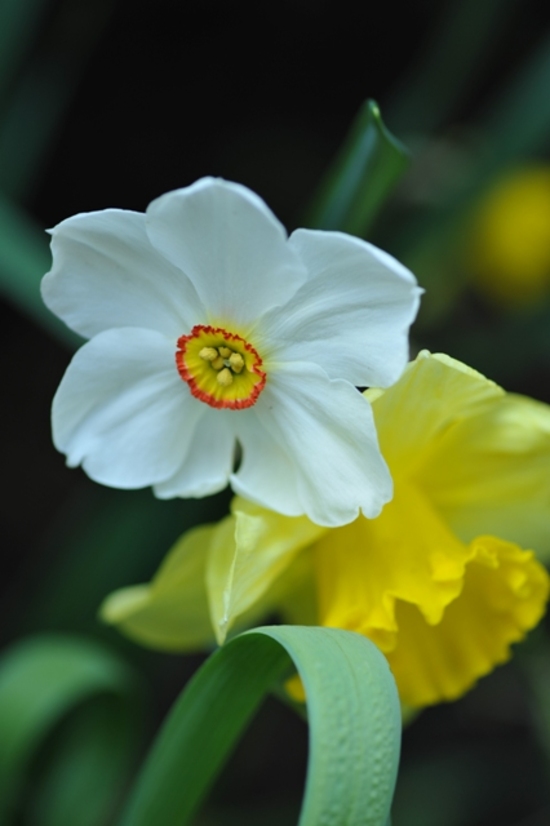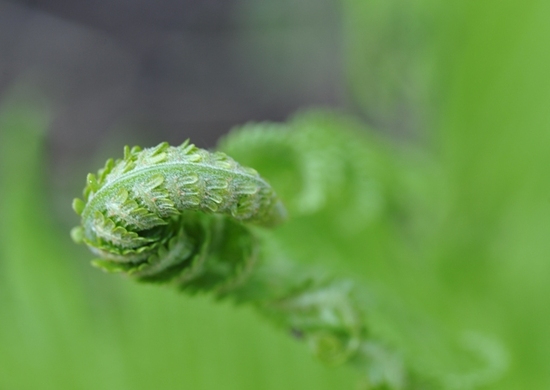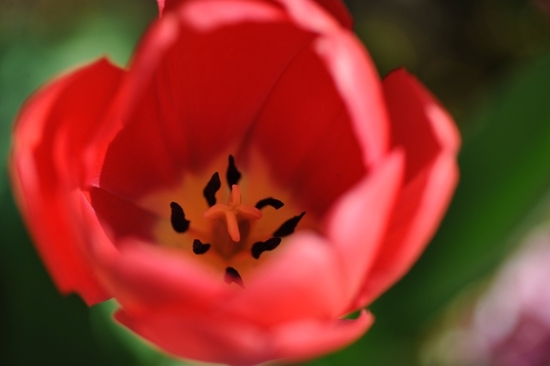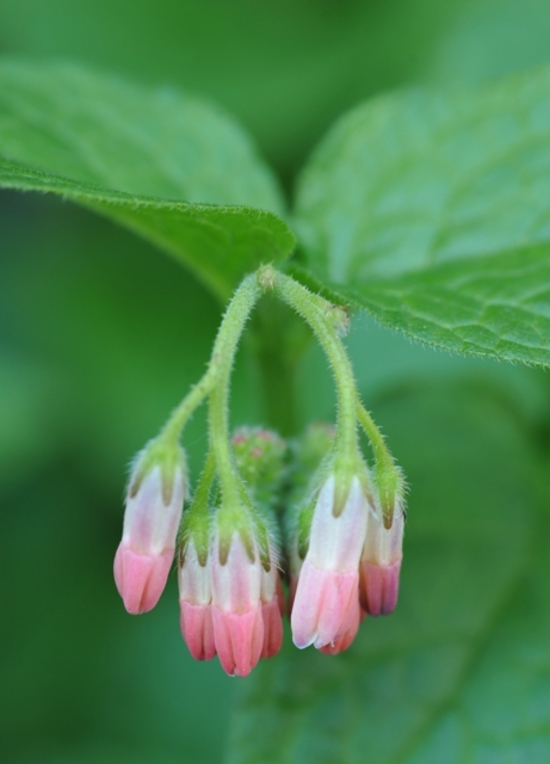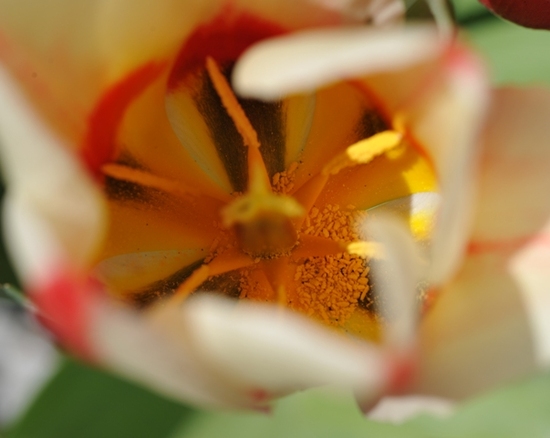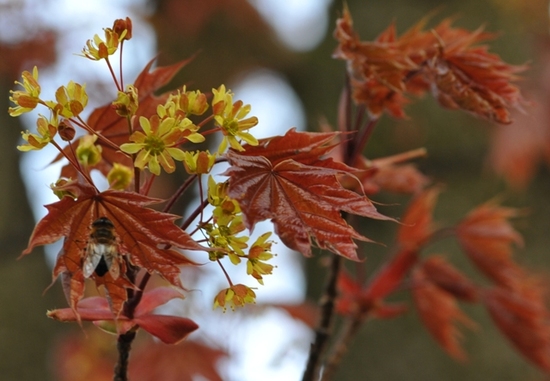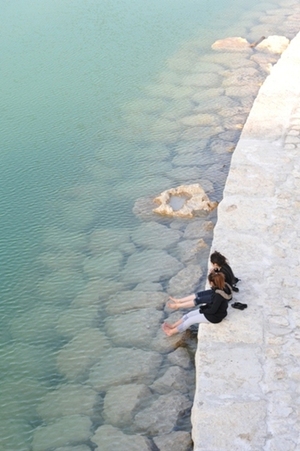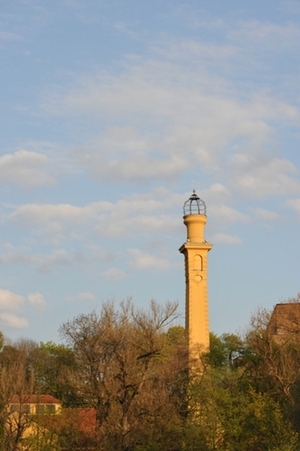Photoblog - Olympiapark
 Thursday, June 16, 2011 at 12:00
Thursday, June 16, 2011 at 12:00 Frau A and I went recently to Munich's Olympiapark to take photos. We got up at 4:30am to make it there before sunrise and came back later at sunset (with a nap in between, of course). We'll show some "natural" photos here, with some HDR/tonemapped ones in a follow-up post for sure.
The Olympiapark was constructed for the 1972 Summer Olympics in Munich. Of course in Germany, it was designed NOT to be dismantled, but to last. And it has stood the test of time very well. Today it continues to host 200+ events each year: concerts at the Olympic Hall, outdoor movies and theater in the summer, and formal & recreational sports year round. You can see below where Olympiapark sits realtive to "downtown" Munich, as well as previous photoblog post locations from Nymphenburg castle/gardens and the English Garden.
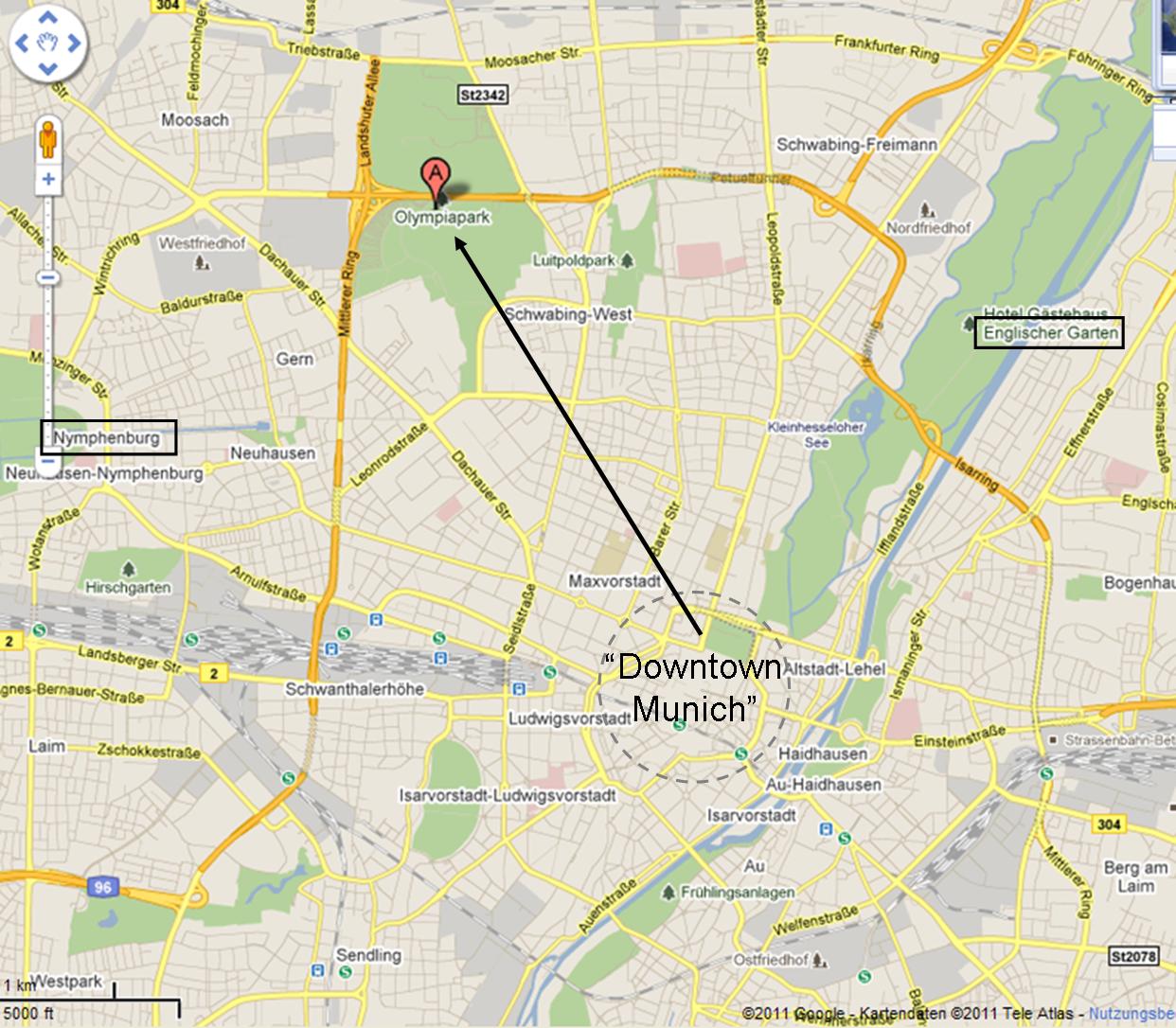
Here's a map of the park. I added a pointer to the theater which is not labeled (edge of the lake, towards the middle), ands put a box around the "Olympiaberg" (towards the bottom-middle). Notice that near the Bus/U-bahn symbols in the upper right is the BMW center and museum (labeled as #19). This will be coming in a future post, since we already saw the Mercedes and Porsche museums in Stuttgart!
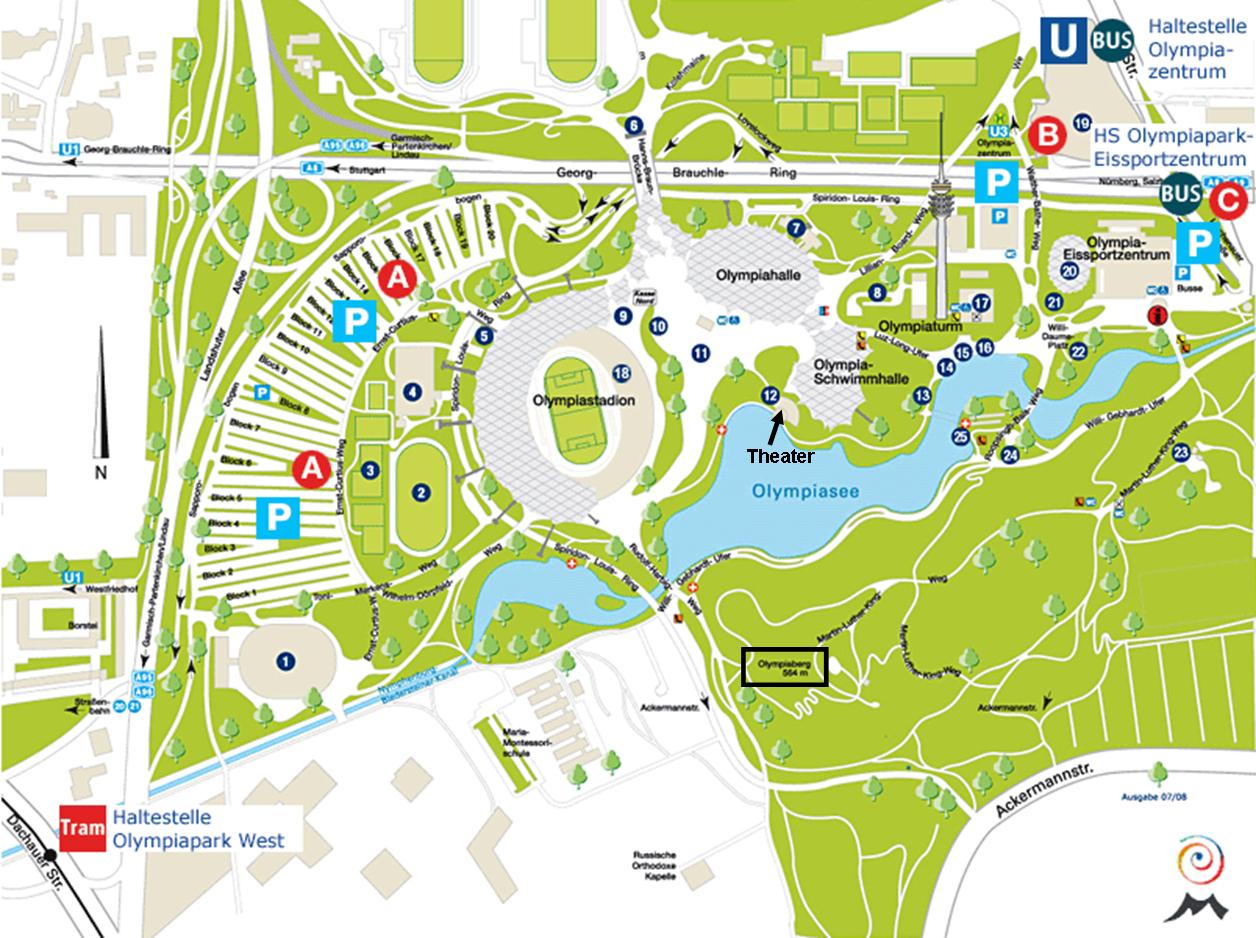
And here is a photo-map from the Olympiapark home page (but beware, the perspective is from the opposite direction in the two maps...). The park has about 3 square kilometers of space in what used to be just open meadow. The Olympiaberg ("Olympia mountain") is 60 meters high with a lookout on top. It's a nice place to see the sunrise/sunset, and some of the famous churches downtown are clearly visible from there too. On the best days, you can see the Alps in the south! Many of the following photos are from that lookout.
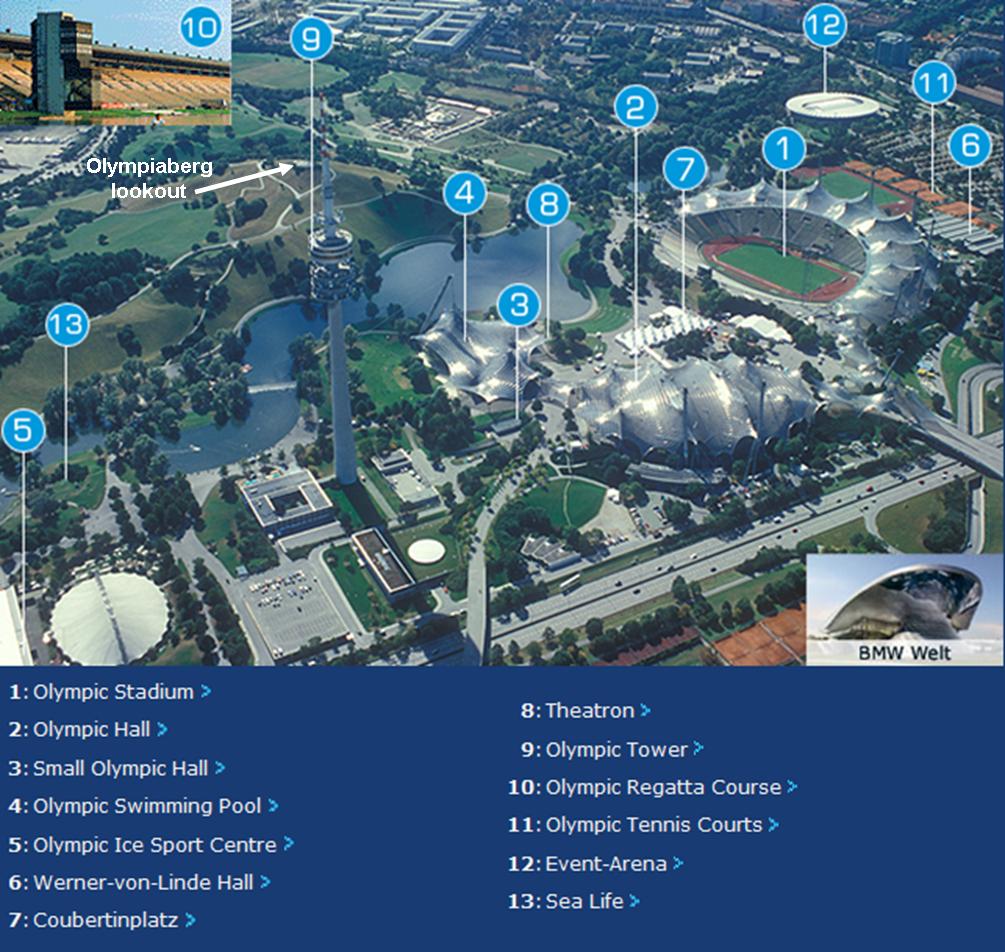
We took this photo from the Olympiaberg around sunset. On the left is the Olympiastadion (stadium), the largest venue. In the middle is the Olympiasee, a large artificial lake. On the far right (closest to the water) is the edge of the swim hall. Behind this is the largest indoor facility, the Olympiahalle... these two can be difficult to distinguish from each other at a distance because of the similar architecture. In front of the swim hall on the right, on the edge of the lake, is the small outdoor theater (notice the tent-like structure above the stage at the water's edge).
This photo zooms out to the Olympiastadion. The stadium can hold 69,000 spectators, and was the home of FC Bayern Munich until 2006 when they moved into the fantastic Allianz Arena. Like the other buildings, it is characterized by acrylic glass and steel cables -- the artistic intent was to imitate the alps. I find that these look much better from afar than near, but not to say that they're ugly up close. Interestingly, construction started in a pit leftover from Allied bombings in World War II, and rubble from the city was used to shape the park landscape.
Now looking right from the same place on Olympiaberg, we get the rest of the swim hall and the Olympia tower. The flat building behind the tower is part of the BWM complex.
The next photo is a little after sunrise (lighting is a bit better), and we had walked down to the lake level. The Olympiaturm (tower) is overall 291m high, with the observation platform at 190m. Below the outdoor platform is a revolving restaurant (a full revolution takes 53 minutes). As of 2004 the tower had registered 35 million visitors. It was not open so early in the morning, so no photos (yet) from the platform or samplings from the restaurant...
We continued walking along the artificial lake, with some nice morning reflections...
... there are few visitors so early in the morning. Very peaceful.
As you descend from the Olympiaberg, you get better views of the venues and the lake. Notice the paddleboats - there is a huge swan-shaped one on the left!
Close up, we noticed that other paddleboats are in the shape of cars. This one is a Porsche, of course.
Finally, we made our way towards the U-bahn to go home. This final photo was taken from the pedestrian crossing over the autobahn, looking back at the Olympiahalle. The hall seats up to 14,000 people. This is where many large acts put on their music concerts, such as Bon Jovi, U2, and the Meisterin Tina Turner who has performed here 23 times! It's not the most acoustically accurate venue -- great to rock out, but was not my favorite for Night of the Proms.
Frau A and I are ready to get back already. Olympiapark is a nice space to walk around, jog (but no swimming in the lake), see a concert, or just take photos.
 Herr J ...
Herr J ...  Post a Comment
Post a Comment  Travel tagged
Travel tagged  Munich,
Munich,  Olympiapark,
Olympiapark,  Olympiastadion,
Olympiastadion,  Olympiaturm
Olympiaturm  1 Reference ...
1 Reference ...  Print Article
Print Article  Email Article
Email Article 












